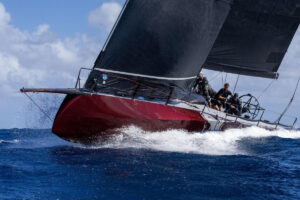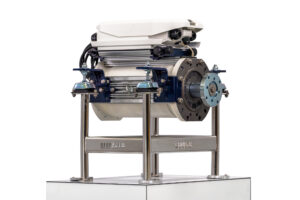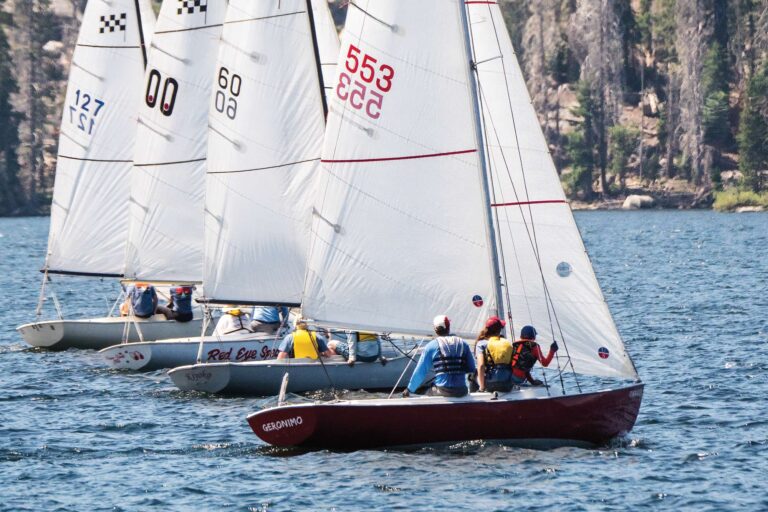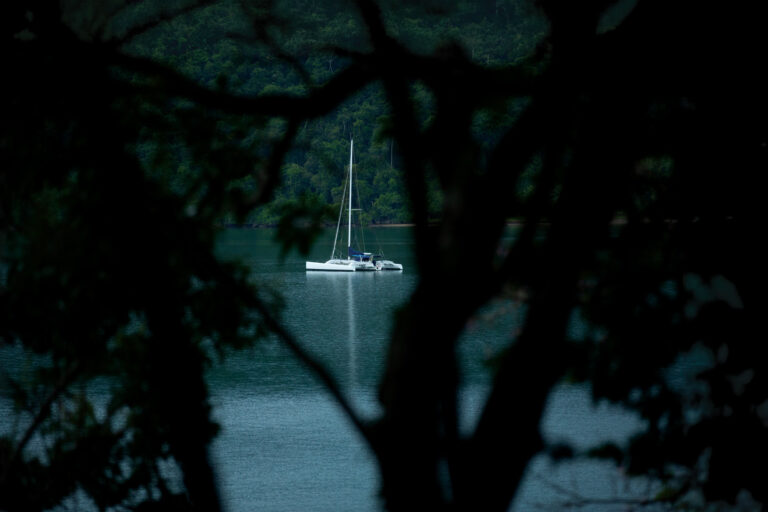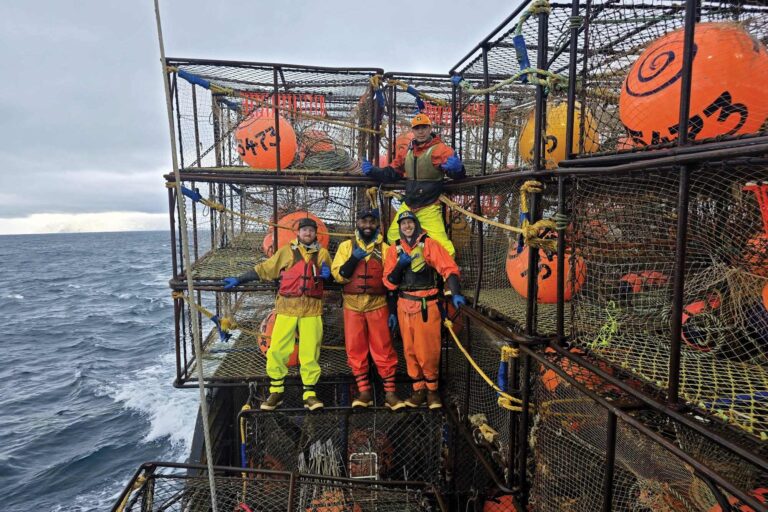
Just an overnight sail away from busy South Florida lies some of the arguably best cruising to be found anywhere. Indeed I am certain that more than one sailing dream (I can’t be the only one) has been launched in response to the magazine photos of perfect white-sand beaches and idyllic anchorages.
If you’ve never cruised the Bahamas before, you may be wondering what the “best” islands are or what the sailing conditions might be like. To address these questions and more, I’ve put together this intro to cruising the Bahamas. (Of course, the Bahamas are such a huge area, and I can’t really cover everything here, so if you have a question, please feel free to email me and I will update this with a Q&A!)
While I’ve cruised the Bahamas in pretty much every season except for fall, winter is by far the most common time that people go. From the holidays through April, it’s not uncommon to share a popular anchorage with dozens (or in the case of George Town, hundreds) of other boats, while in the summer, you might have the place to yourself.
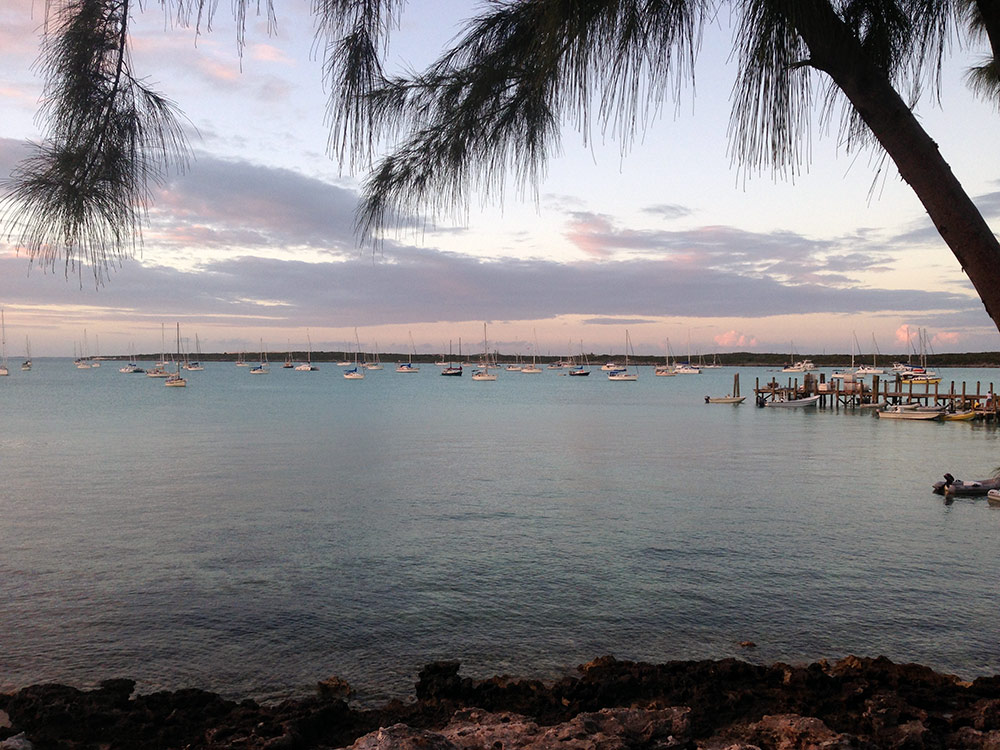
Getting There
If a winter in the Bahamas is in your plan — either as your ultimate destination, or as an island hop down the thorny path to the Caribbean — you’ll probably want to be crossing over from the East Coast sometime in November. While you can cross from pretty much anywhere south of say, Hatteras, my favorite jumping-off point is South Florida, and the more south you go, the easier your crossing will be. For example, if you want to check in at Bimini or Cat Cay, consider leaving from around Key Largo. If the Abacos are your initial destination, leaving from Miami or even Fort Lauderdale will allow you to ride the Gulf Stream for a bit. It is possible to go more or less straight across the Stream, but you should have plenty of fuel aboard. My husband and I have taken our ketch, Lyra, to the Bahamas, once from Fort Lauderdale, and once from Port Canaveral (heading south along the coast, inside the Stream, before turning towards the islands). Both times we went straight to Nassau to clear in, although when we left from Canaveral, stopping in West End or Freeport, would have been quicker (we were eager to make our way south, so chose to head to Nassau).
Although they aren’t terribly frequent in the fall, cold fronts can sweep down and bring northerly winds with them (and rain squalls)—you do NOT want to be caught in the Gulf Stream during a blow out of the north, so plan your crossing when you have a weather window with light breezes with nothing out of the north for several days prior to your journey to allow the Stream to “calm down.”
The journey to the islands is a magical one — since you want to arrive during daylight hours, most sailboats will need to leave sometime the previous evening/night. After leaving the crazy that is the So. Fla. coast, you have a hopefully uneventful time in the Stream — and plenty of time to practice tracking ships on the AIS — and come morning are approaching the Bahamas. The closest ports of entry are in the Bimini islands, or you can sail on to ports in the Abacos, the Berry Islands, or Nassau.

Islands in the Sun
The Bimini islands, including Cat and Gun cays, are a common first stop for cruisers. Cat Cay (all cays in the Bahamas are pronounced “key”) is an easy port of entry and neighboring Gun Cay is a nice place to relax for a few nights before heading across the Great Bahama Bank.
After crossing the banks, your possibilities are open: you can spend time in the lovely and very quiet Berry Islands, head over to the bustle of Nassau, make way for Eleuthera, turn north to Great Abaco, or south toward the Exumas and the far Out Islands beyond.
Andros: The largest islands in the Bahamas, Andros isn’t typically thought of as a hot spot among cruisers, but it makes an interesting stop. Fresh Creek, home to the US Navy’s Atlantic Underwater Testing and Evaluation Center (AUTEC) base, and Morgan’s Bluff are the areas most frequented by cruisers. If you’re into scuba diving, Andros boasts a barrier reef that extends more than 140 miles along the island’s east coast and to a depth of 6,000 feet making up part of the western edge of the trench known as the Tongue of the Ocean.
Abacos: This northern Bahamas island group is very popular among both new and experienced cruisers (Check out CW contributor Wally Moran’s Adventures in Abaco). Unless you’re in dire need of provisions, most sailors will choose to skip busy, cruise-ship oriented Freeport and head to the picturesque settlements of Marsh Harbour or Hope Town.
Berry Islands: These beautiful islands are the place to go if you’re looking for peace and quiet as most of the cays remain undeveloped and uninhabited. The only population centers, if you can call them that, are at Chub Cay, which is where you’ll find the new Chub Cay Resort and Marina (reopened in mid 2017 after being destroyed by Hurricane Matthew, and Great Harbour Cay on the northern end. If you stop in the Berrys, have a meal at Flo’s Conch Bar on Little Harbour Cay—it’s a real Bahamian experience.
Nassau: Considered by most cruisers to be a necessary evil, Nassau is the largest city in the Bahamas, and as such has attractions, groceries, marinas and marine services, and an international airport. If you just need to make a quick stop in the big city and don’t want to stay overnight, head over to Rose Island — lovely anchorages, decent snorkeling, and a good place to stage yourself for a run to the Exumas or Eleuthera.
Eleuthera: Eleuthera is a beautiful and somewhat out of the way place for cruisers. The island is nearly 100 miles long and just a 1/2-mile wide in most places. We spent time cruising Eleuthera for the first time last winter, and absolutely loved it. There is a great anchorage with nearly all-around protection at Hatchet Bay, a lovely settlement at Governor’s Harbour, and the convenience of Rock Sound is hard to beat (a good grocery store and even an airport with a dinghy dock). We rented a car at the airport and traveled the length of the island for a day.
Exumas: For many sailors, the Exuma islands are cruising paradise — they’re beautiful and interesting, and they offer great sailing, snorkeling, and fishing. There are a variety of anchorages to choose from all along the 130-mile chain that offer everything from solitude to a national park to a popular cruisers’ destination. The Exumas are easily my favorite region in the Bahamas—some not to miss stops are the iguanas at Allen’s Cay; the sunken plane at Norman’s Cay; Thunderball Grotto at Staniel Cay; mangrove creeks at Shroud Cay; and the moorings at Warderick Wells. And of course the convergence of cruising sailors in George Town. If you’re there in early March, check out the George Town Cruising Regatta.
The Far Out Islands: If you’re looking for some adventure and are a competent and self-sufficient cruiser, consider checking out some of the islands that are way off the beaten track. Some of these islands, such as Cat Island, Long Island, Conception Island (one of my favorite places!), and Rum Cay, are a pleasant day sail away, others such as Crooked and Acklins islands, Mayaguana, Great Inagua, and the Ragged Islands are much more remote.

Further Reading
Delicious conch salad and the beautiful islands of the Bahamas go hand in hand—check out this Conch Salad recipe.
Need some inspiration for when the other fresh veggies run out and the cabbage is still going strong? Here are some ideas
Photo gallery: Miami to George Town, Bahamas
Photo gallery: New Year’s in the Bahamas
Photo gallery: Pure Bahamas
Only have a short time or just a charter in mind? Here are Four Easy Trips in the Abacos
Chartering on a budget in the Abacos— it can be done!
Here’s the story of a quick delivery from Miami to the Exumas
Shots from the Family Islands Regatta— there’s nothing like it!
More info
Cruising Tips
From Brittany Meyers aboard Asante
Bahamas is ALL about the water, so make sure you have a few things on board to enjoy it: like snorkel gear, Hawaiian sling (if you are into spearing), and – if you have a room – an inflatable kayak or inflatable Paddle board (iSUP) can be a LOT of fun, especially in the more remote islands where the land offers little to explore.
Expectations are everything: If you are traveling to the Exumas, it’s good to prepare for sleepy, remote islands with very few “shore attractions.” We met people who went to the Exumas expecting the British Virgin Islands and they were very disappointed.
Invest in the “Explorer Charts” they are well worth it and exemplary. BUT, don’t forget that you CAN go off the beaten path every once and a while, and not all anchorages are marked with an anchor.
Provision well in the US, but don’t go crazy. Our first trip to the Bahamas we provisioned like we were going to the moon and it was totally unnecessary. There are plenty of islands that have decent grocery stores and while you might not eat your favorite food from home, you will NOT go hungry.
When anchoring, try not to simply follow the herd and leave a little room to the boats who were there first if it is possible. Nobody enjoys being anchored on top of and there are PLENTY of fantastic anchorages in the Bahamas.
One of the best features of the Bahamas are the locals – they are friendly, kind, welcoming and have not been embittered by mass tourism. Enjoy this camaraderie and, if your budget allows, support the local community by eating at their restaurants or purchasing their goods from time to time.
From longtime Bahamas cruiser, Pam Wall
Take plenty of outboard motor fuel
Get the biggest RIB you can fit aboard your boat comfortably, it will be your source of diving, exploring, eating out, and your car!
Have an easy way to get into your tender from the water. I go up the back of my RIB with my back against the pontoon and use the cavitation plate of the outboard as a convenient step up into my tender so easy so simple
Set up an easy way to collect rain water in your water deck fill. I use a tea towel wrapped around the deck fill facing forward for a dam for rain on foredeck going down the scuppers into the deck fill. Works like a charm
Take a “look bucket” for looking under water from your tender. Check your anchor from the tender from the look bucket
Take a hand meat grinder for delicious conch fritters
Take a tack hammer to open hole in conch to get the meat out
Take a COMFORTABLE Mask, snorkel, flippers as you will be using them all the time
Be sure you have screens, awnings, bimini top, sun shades for the aft end of your bimini top, etc
Take a lot of GOOD sun protection lotion, hat, polarized sunglasses (I take 3 pairs of inexpensive polarized sunglasses as I know I will probably loose them!), dive shirts with sun protection, aloe if you get burned
Coat your RIB with 303 Aerospace Protectant to protect it from UV deterioration
Don’t forget the Hawaiian Sling for fish and crayfish. No spear guns allowed

